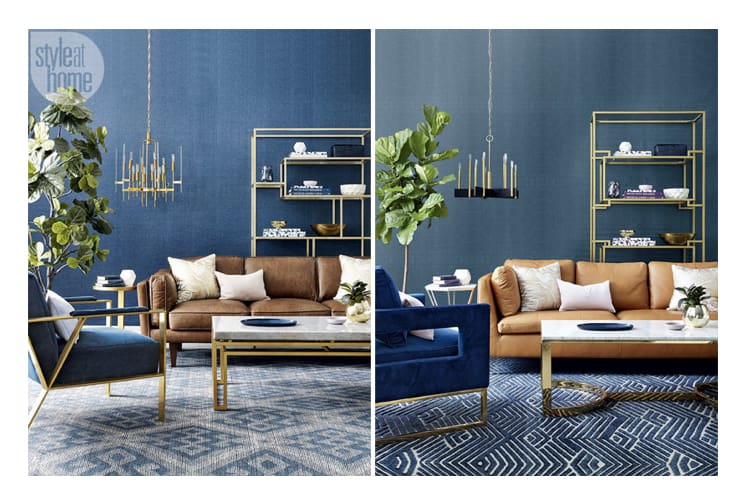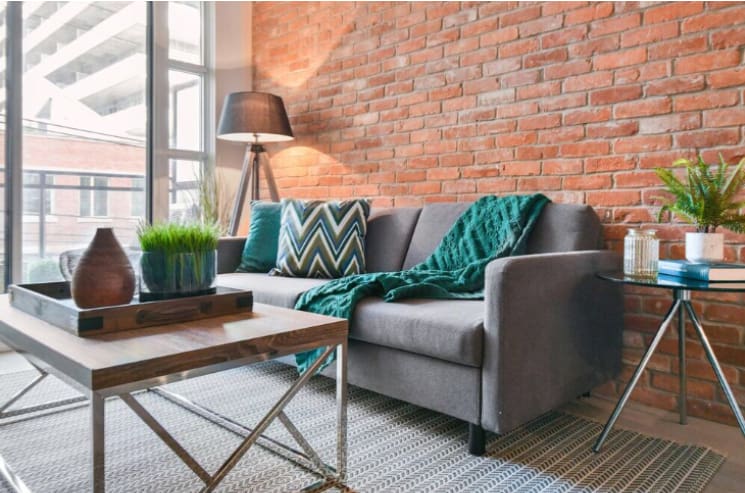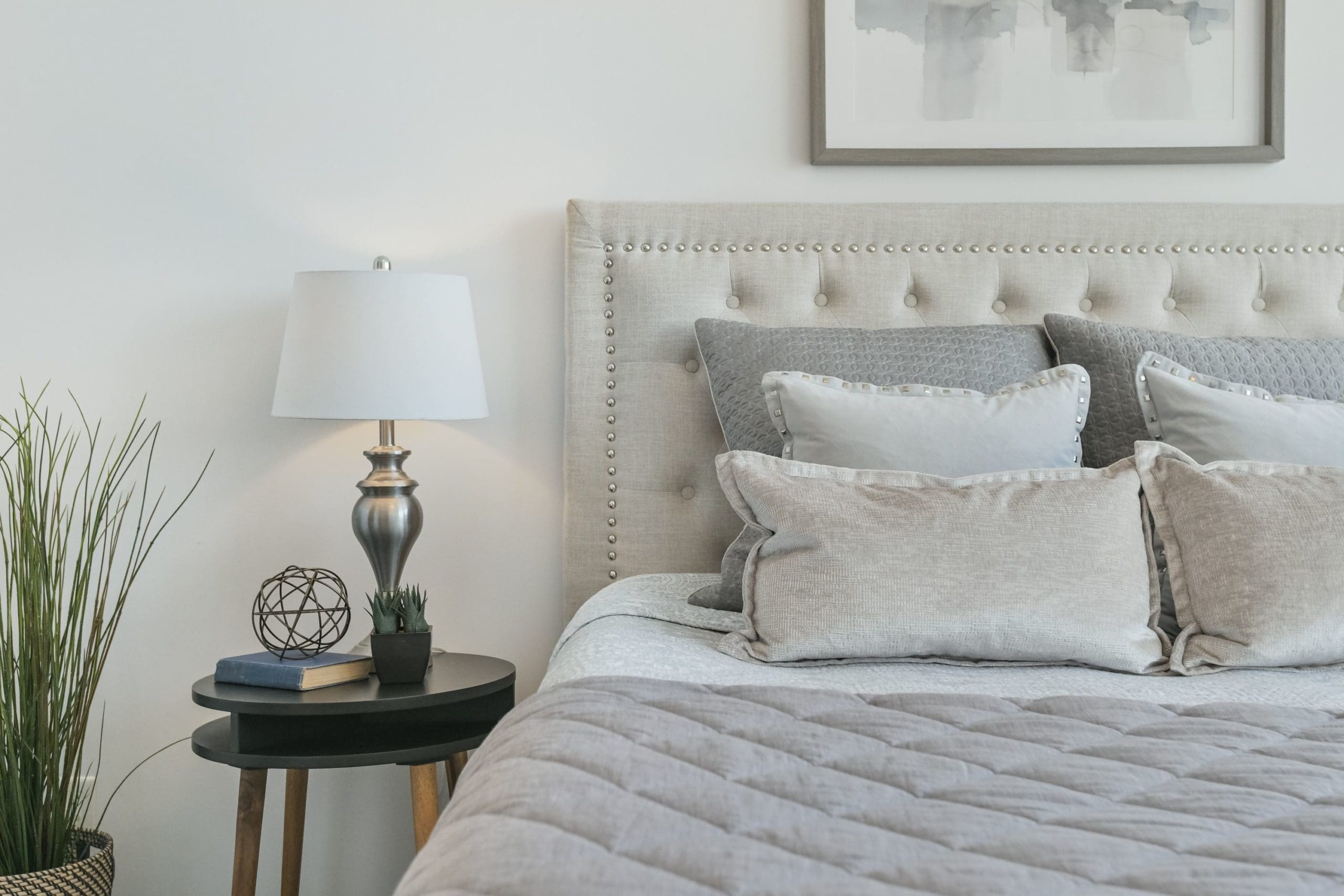I’ve often said that people should ‘think like a stager’ when shopping for their homes. That’s because as a professional stager I spend a lot of time shopping and have figured out when to spend on things, and when to thrift. We’ve all seen the ‘high/low’ articles in magazines like House and Home, where they show two side by side pictures of rooms that look the same except that in one, everything is 10 times more expensive. I swear the concept for this came from a stager. Making homes look expensive is the job and it’s not always accomplished using expensive things. Some of my favorite items to stage with were purchased on the cheap and there’s no reason why you can’t do the same thing for your home.
The first rule to save on anything is to shop around. Never set a hard deadline for buying a piece of furniture if you don’t have to. Looking for the perfect sofa by Saturday? Expect to pay more, always. Having an idea of what you like before you start and being flexible will always help you save in the end. Start at the stores you know you love but aren’t eager to afford and move on from there. There’s nothing wrong with starting your search at RH, jumping to West Elm, before checking out Structube, and it doesn’t have to stop there. Depending on the piece you’re searching for, there’s no reason not to look at vintage and antique stores or online. Online re-sellers like Craiglist and Kijiji probably aren’t where you’ll shop for a couch but there are some gorgeous dining tables and chairs, end tables, art, and so much more, for sale for far less than you can find anywhere else.
Just remember: If you’re looking for a bargain be focused on what you want, compare quality from retailers ranging from high to low, give yourself plenty of time, and broaden your search to include some places you might not usually look.

Accents, Art, Accessories – Time to Save
The average person doesn’t need as many accents and art pieces as a stager, but that doesn’t mean they shouldn’t prioritize saving on the ones they need. Accents, art, and accessories are an essential part of helping make a piece of furniture or space look more expensive. Even an Ikea coffee table can become cover shot material when styled and photographed well. Art varies significantly in price and depending on what you’re looking for, you may need to spend, but if you’re flexible, there are ways to save. Never buy new frames if you don’t have to. The best ones are vintage in terms of construction and price. Look online or at thrift stores on the outskirts of the GTA and you’ll be sure to find some stunning, quality frames for significantly cheaper than anything in store. Any handsome frame looks great with a mirror in it but if you’re looking for inexpensive yet beautiful art, consider going to The Paper Store on Queen St West for some interesting pieces of printed paper to the frame. They also sell large calendars with some stunning imagery if you’re looking to create a grouping of art for a fraction of the price you’d find elsewhere.
Accents and accessories line the shelves of HomeSense but if you’re looking for unique, quality pieces, you really should be looking second hand. From vases, bar accessories and coffee table books to candle holders and beyond, the quality ones usually stand the test of time and thus end up in second hand and vintage stores. One hundred dollars at a thrift store has landed me an entire home worth of accessories in the past compared to 2-3 knick-knacks at HomeSense. This is one area where spending less is a no brainer.

Accent Tables and Chairs- Time to Save
Not unlike accents and frames, they simply don’t make things like they used to, and as such, I tend to lean towards vintage when shopping for coffee tables, end tables, accent chairs, and dining chairs. There is a lot of product out there if you’re willing to look. Wood products stand the test of time, and some even improve with age. Upholstery doesn’t always hold up as well but with a little bit of imagination, even reupholstering items can get you something far beyond what you could get for the same price new. These are the kinds of pieces that add character and interest to spaces and don’t need to cost a fortune to shine. Well built, quality items last, so buying more expensive items new, likely of lesser quality, is not a wise investment- at least not if you’re looking to build a staging inventory. Looking at vintage stores downtown might still be cheaper than buying new at an upscale retailer, but the best finds are to be had on the outskirts of the city and online. Scratches and weathering have never bothered me, even for staging other people’s homes. Even imperfect, quality items are better than cookie-cutter in my opinion, and when styled well, who’s to notice a scratch or two?

Primary Seating, Rugs, Lamps- Time to Spend
You should always save when you can, but for some things, you need to go in with the expectation that spending more will actually get you more. The cost of a quality sofa has come down in recent years with new competition in the market place (looking at you Structube) but you really do get what you pay for. Paying more for quality construction, fabrics, and foam almost always means a more enjoyable sitting experience. I’ve often found the same thing true for rugs and lighting in general. There are great vintage ones out there, but you’ll always pay top dollar for them. Quality rugs are made of better materials and hold up much better than ones for far less. While this doesn’t matter as much for staging homes, I would always recommend spending a little bit more on something you plan to live with. Rugs and sofas will likely be focal in your room so spending a bit more should be worth it, especially if you’ve found savings in some other pieces. One way to save while still getting the quality you seek is to buy showroom floor models when you can and to watch for sales. I hate junk mail as much as the next person, but if you’re at a store you adore but really can’t afford, getting an email notification every time they have a sale just might save you big.

Linens, Pillows and Throws- Time to Spend
If it touches your skin daily and is used for comfort there’s nothing wrong with spending a little bit more. This is how you’ll add luxury to space without spending too much on all of the other big-ticket items. While we don’t stage with linens, I never recommend skimping on them, and bedding, in general, is one way to add a feeling of luxury to any home. Pillows and throws are the same. The quality ones simply look and feel different and even if people are simply walking through a home, expect that they will touch and feel them the same way you would if you were walking through a store (pre-COVID 19 that is). The good thing about spending more on throws and pillows is that they aren’t large items, so they can still come in under budget when you’ve found ways to save elsewhere. Again, less important for staging, but if you’re going to style your couch with a throw at home you want it to add luxury in its look and feel. A synthetic blend won’t feel as nice as an artisan soft wool the same way a cheap pillow won’t feel or hold its shape as nicely as a feather-stuffed one. These smaller-ticket items are a great place to inject a bit of luxury into space without breaking the bank.
The right price to pay is always what you can afford, but don’t get discouraged if that doesn’t get you exactly what you want. There are creative ways to find quality pieces for less and make inexpensive pieces look more expensive by layering in some more luxurious ones. The next time you see a room layout you love, snap a picture of it and make it your goal to create your very own ‘high/low’ recreation of it. You might just be more of a stager than you think.
Written By: Kiel Storms. To read his bio, click here.
